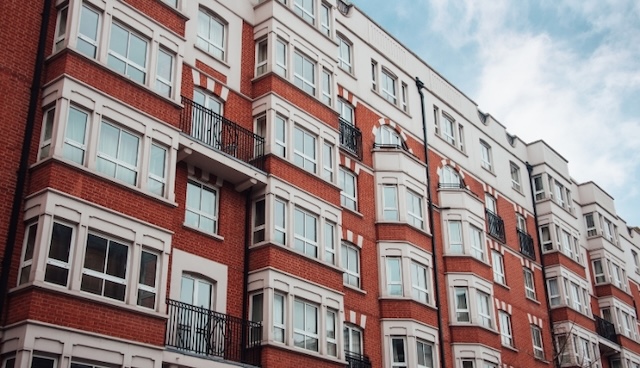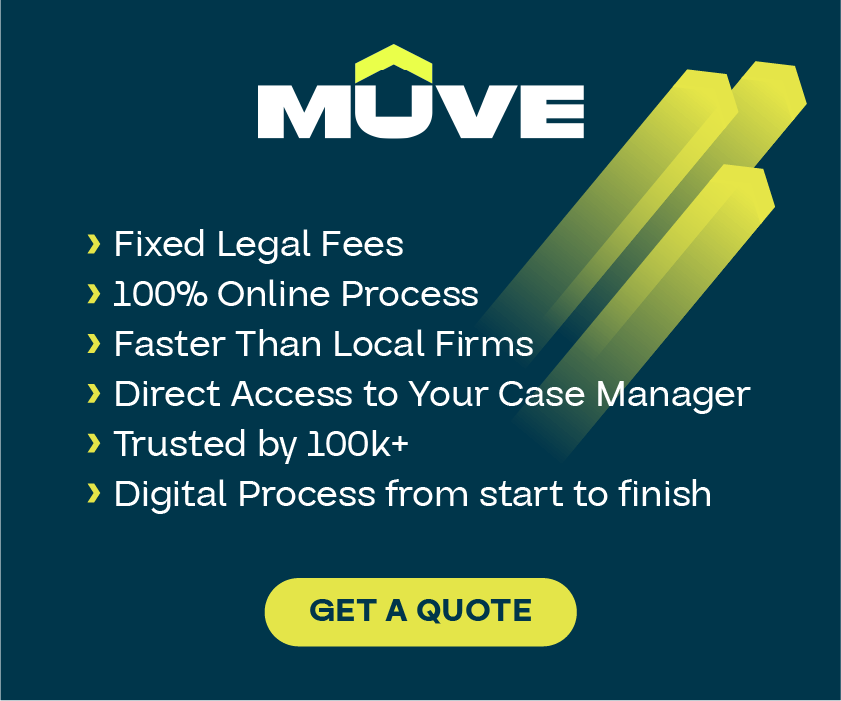Leasehold Conveyancing Process: A Step-by-Step Guide for Buyers & Sellers
4 August 2025 • 16 min read

See what our customers have to say about us
Key Takeaways:
- Leasehold conveyancing has more legal steps compared to freehold transactions because of third parties involved (e.g. landlords and management companies) and additional documents (e.g. lease terms, LPE1, etc.)
- The leasehold conveyancing process involves 6 steps: Pre-contract, Lease Review, Searches and Enquiries, Mortgage Checks, Contract Exchange and Completion.
- Leasehold conveyancing fees are typically higher than freehold transactions because of the extra steps and documents involved. Expect to pay around £1,400 to £1,500 (both legal and disbursement costs).
- Delays in conveyancing may be caused by LPE1 delays, lease renegotiations, longer mortgage processing and third-party communication issues.
- Leasehold management includes taking over lease-related payments (service charges and ground rent), handling maintenance and repairs, lease extension, dispute resolutions, etc.
- Working with experienced leasehold conveyancers is crucial to reduce delays and complete transactions with fewer issues and lower costs.
The leasehold conveyancing process involves more legal steps compared to freehold property transactions since it comes with its own set of documents and involves third-party individuals, such as management companies and landlords. Having all these extra steps and individuals to transact with could lead to potential delays and higher costs.
Fortunately, there’s a way to minimise delays and conveyancing costs as long as you understand what to expect. Knowing the process allows you to be proactive with your decisions, enabling you to reduce mistakes and keep the conveyancing journey as short as possible.
Whether you’re a first-time buyer or a seller keen to complete the selling process, keep reading. This article will discuss the leasehold conveyancing steps, fees, timeline and future considerations. With a better understanding of the leasehold conveyancing process and the right solicitor to help, you can complete the transaction as quickly and as legally accurate as possible.
What is Leasehold Conveyancing?
Leasehold conveyancing is the legal process of transferring the ownership of a leasehold property from the seller to the buyer.
The conveyancing process involves additional steps due to the nature of the property’s ownership.
In freehold properties, the ownership of the property’s building structure and the land on which it stands is retained by the owner. In leasehold properties, the ownership is only valid for a fixed period or lease term. This term is usually decades or hundreds of years long, and the ownership usually does not include the land on which the property stands.
The additional legal and administrative steps include reviewing detailed lease terms (including the leasehold information pack), conducting more complex searches, and communicating with landlords and management companies. A leasehold property purchase may also come with restrictions, such as ground rent.
These extra steps make the leasehold conveyancing process longer and more costly compared to standard conveyancing for freehold properties.
Is leasehold conveyancing worth it? Find out how leasehold differs from freehold properties.
What is a lease?
A lease is a contract that contains the legal terms allowing a leaseholder to occupy a property for a specific period.
Among the other details included in this legal contract are:
- The lease term (between 99 and 125 years, initially)
- Ground rent responsibilities (usually involve paying a fixed rate, or in some cases, a predetermined rent increase after a few years)
- Service charges (may consist of costs to maintain common areas or even future work for improvement)
- Rights of access
- Rules for the use of property
- Maintenance and repair obligations
When a leasehold property is up for sale, the buyer’s solicitor will request a copy of the lease so they can review the terms. If the lease period is not yet done, the buyer will eventually become the new leaseholder.
The solicitor will create a “Report on Title” that will include details of the rights and responsibilities the new owner will take over once the leasehold property sale is completed.
What’s in a leasehold information pack?
A leasehold information pack is a collection of documents required to complete the conveyancing process.
This will help the buyer’s solicitor identify potential complications or issues with the sale of the leasehold property.
Among the documents included in this pack are:
- Details of the freeholder or managing company/agent
- Length of lease
- Restrictions and covenants attached to the lease
- Ground rent and service charge costs (including payment history)
- Planned major improvements or upgrades (for communal areas)
- Building or property insurance details
- Disputes or breaches of lease terms (if any)
- Management company accounts or notices
This pack is requested from the freeholder or the managing agent. It typically costs the seller between £300 and £800. It will take time to gather all these documents, so the buyer’s solicitor should request this as early as possible.

The Leasehold Conveyancing Process: Step-by-Step
The solicitor will inform you how to buy a leasehold property as well as guide you through the leasehold conveyancing process. Understanding each step of the process will help you verify the information you’re receiving and prepare the requirements in advance.
The leasehold conveyancing process can be broken down into 6 steps.
Step 1: Pre-contract Stage
After your offer is accepted or you’re ready to sell, it’s time to get a conveyancing solicitor. Since leasehold transactions are more complex and have additional steps, you want to ensure you’re working with a solicitor with previous experience in leasehold properties.
Compare different solicitors and get a quote from them. Choose a professional known for their transparency and efficiency.
Once you’ve chosen, you can proceed to instruct the solicitor. They will review the Memorandum of Sale and request or prepare the Leasehold Information Pack (if you’re the buyer or seller, respectively). You’ll be asked to provide them with various documents, such as proof of mortgage deposit, valid IDs, and similar documents.
The solicitor or conveyancer of buyers will also communicate and liaise with the managing agent or freeholder, the other party’s conveyancer, mortgage lenders, etc.
Step 2: Review the lease
The solicitor or conveyancer will also review the lease to check for any potential issues, ensuring the terms are legally sound.
Among the details they will discuss with you are the mortgage lender requirements, clauses that may affect your ability to resell the property (e.g., subletting restrictions or ground rent), expected increases in the service charge, and any upkeep responsibilities associated with the leasehold property.
If there are red flags (e.g. escalating ground rent clauses), the solicitor will discuss them so you can decide to proceed or not. They will prepare a Report on Title outlining all information about the leasehold property. This report will outline plans to enhance the property and their impact on property ownership and responsibility. The building insurance policy will also be reviewed to determine if it’s adequate for the property and to identify who is responsible for paying it.
This is an essential part of the conveyancing process because it highlights the rights and obligations of the buyer once they become the new owners.
Step 3: Searches and Enquiries
In continuing with the review of the lease and submission of the report on title, the solicitor will also conduct several searches and enquiries during the leasehold conveyancing process.
This includes a leasehold property enquiry (LPE1), where the solicitor will request documents and information from the landlord or management company. Among the details that should be disclosed are planned major repairs or improvements, pending Section 20 notices, management structure, dispute history, and other relevant data.
The conveyancer or solicitor will also conduct standard searches, such as:
- Land Registry Search (information about current ownership, property boundaries, rights and restrictions)
- Local Authority Search (for planning permission, highway developments, health notices, conservation reports)
- Environmental Search (flood risks and land contamination history)
- Water and Drainage Search (water supply and sewer system connection)
Step 4: Mortgage Considerations
The extra complexities of leasehold properties also mean lenders will impose stricter criteria. Solicitors should check the following:
- Lease terms should be at least 80+ years (with most lenders requiring 85 years or more)
- Ground rent and service charge clauses (check if some excess charges or stipulations might affect the ability to resell the property)
- Future building works that might affect the mortgage valuation (e.g. any structural issues that will be improved)
Lenders can choose to withdraw their mortgage offer if they’re not satisfied with any of these criteria. This is why buyers should have their solicitors review leasehold properties early so that they can make necessary adjustments.
If the mortgage offer is not withdrawn, the buyer can proceed to sign the mortgage deed and contract. In some cases, this comes with a new lease, which will also be signed. These documents show a commitment to the property purchase and mortgage agreement.
Step 5: Contract Exchange
At this point, all the documents and search results have been deemed satisfactory. The buyer and seller (with their respective solicitors) should have negotiated all the terms and have agreed to every detail. Once done, the solicitor will prepare:
- The final draft contract, including leasehold-specific clauses
- The completion statement, including ground rent, service charges and apportionments
- The completion date, which all parties will have to agree to
This leads to the contract exchange, wherein the transaction becomes legally binding. A deposit is usually made at this point. If one backs out of the transaction, they will be penalised.
Step 6: Completion Day
The completion day typically occurs a week or two after the exchange date, usually on a previously agreed-upon day by the buyer and seller. The buyer’s solicitor transfers the mortgage funds, and once the funds are confirmed, the seller releases the keys and the transfer deed to the buyer. This usually occurs within hours, but delays are possible, especially during the transfer of funds (e.g., bank deadlines or cutoffs) or if the property is part of a chain.
If there are no issues, the buyer becomes the official leaseholder of the property and can now be registered with the Land Registry. The solicitor will also pay the necessary Stamp Duty Land Tax rates to HM Revenue and Customs.
They can start moving in while the solicitor sends notices of assignment to the freeholder or managing agent. The ground rent and service charge accounts are also updated, since the buyer is now responsible for the lease obligations.

What are Leasehold Conveyancing Fees?
Conveyancing fees for leasehold property are typically more expensive than for freehold transactions. The current average conveyancing cost for leasehold properties is around 1,400 to £1,500.
Leasehold conveyancing fees are divided into two categories: legal fees and disbursement fees.
The legal fees cover the professional service of the solicitor or conveyancer. The disbursement fees cover third-party fees incurred to complete the property transaction (e.g. search fees, land registry fees, etc.)
In 2024, there were some key changes to Leasehold management which may impact conveyancing fees. Review these updates to ensure you’re paying the correct amount for the services you’re getting.
For more clarity, here’s a breakdown of leasehold conveyancing fees explained in detail.
Legal Fees (£400 – £1,000 +VAT)
This is the legal fee paid to the solicitor or conveyancer. The additional work and documentation required for a leasehold transaction mean higher costs. There are also more third-party communications involved (e.g., freehold owners and managing agents), which is another factor contributing to the additional fees.
When getting a solicitor, choose one that specialises in leasehold properties. Their experience can significantly reduce risks and help you save time. The minimal delays will result in a quicker conveyancing service and lower expenses.
Search Fees (£250 – £400)
Search packs check the leasehold property and the surrounding area to ensure there are no issues. Among the searches are local authority, environmental and drainage searches. The property’s location influences the actual search fee. Check the local city council to g et a more accurate amount for the property.
Land Registry Fees: (£20 – £540)
This covers the transfer fee for changing the leasehold property ownership. The exact amount would depend on the property’s value. The solicitor will facilitate the land registry application. Usually, this can be done online. However, if the leasehold property is more complex and cannot be registered online, additional fees may be required.
Bank Transfer Fees: (£30 – £45)
This covers the cost of transferring the funds from the mortgage lender to the seller. Large sums require transfer fees, and the specific fee would depend on the mortgage lender.
Stamp Duty Land Tax: Varies
The cost of Stamp Duty Land Tax depends on the property’s value, the reason for the purchase, and the buyer’s circumstances. If the property is within the SDLT thresholds, you may not be required to pay anything.
As of April 1, 2025, the SDLT thresholds are:
- First-time buyers: 0% SDLT rate for properties £300,000 and below
- Other buyers: 0% SDLT rate for property £125,000 and below
Notice of transfer (£50 – £200)
This fee is an administrative charge paid to the freeholder or managing agent, allowing them to update ownership changes for a leasehold property. The amount would vary depending on the lease terms. This will ensure that management knows who is legally responsible for the property and with whom they should communicate moving forward.
How long does leasehold conveyancing take?
If you’re wondering how long does leasehold conveyancing take, the accurate answer is it depends. Several factors can delay the conveyancing process, many of which can be mitigated by working with the right solicitor. With Muve, our leasehold conveyancing process takes 18 weeks on average. But with our Muve Lightspeed, you can enjoy a complete exchange in 8 weeks.
Among the common delays are the following:
LPE1 Delays
Freeholders, landlords or management companies may take time to supply the Leasehold Information Pack. If the provided documents are incomplete, you will need to review and update the necessary data.
Lease Review
If the lease has unfavourable clauses or short lease terms, this will require renegotiation or the addition of indemnity policies. These will add days to the conveyancing process.
Find out if you need indemnity insurance for your leasehold.
Mortgage Processing
Lenders can also cause delays in the leasehold conveyancing process, especially if they request amendments or reject your application due to high ground rent or service charges. You’ll need to find an alternative lender to fund the leasehold property.
Third-Party Communication
Coordinating with different individuals (landlords, agents, solicitors) or companies (lenders, managing companies) adds time. If one party takes too long to respond, it can delay the whole conveyancing process.
Choosing a conveyancing solicitor who is proactive in chasing information will help speed up the timeline.
Leasehold Management
If the transaction is completed, that means the buyer becomes responsible for meeting all conveyancing leasehold flat agreements, which usually include:
- Budgeting and paying the service charges and ground rent.
- Handling and funding major works or maintenance.
- Complying with lease covenants and other agreements.
- Communicating with landlords or managing agents regarding property-related issues, such as repairs or disputes.
Proper management minimises the additional costs involved in owning a leasehold property.

Future Leasehold Considerations
Apart from management, the buyer should also note the future responsibilities they will need to take on as the owner of the leasehold property.
Lease Extension Process
Shorter lease terms typically result in a decrease in property value. Lease extensions are often costly and take time. The new owner of the leasehold property can apply for an extension after owning the property for at least 2 years (or, depending on the details of the LPE1).
This usually requires lease extension conveyancing and will add 90 years to the lease while reducing the ground rent
Dispute Resolution
With leasehold properties sharing common areas and building structures, disputes are more likely to occur between the owner, management, or neighbours. These disputes may include, but are not limited to:
- Unjust service charges
- Poor building maintenance
- Noise complaints or unruly neighbours
These disputes can be resolved with the help of an unbiased third party (either a legal professional or organisation).
Selling a Leasehold Property
If you plan to sell a leasehold property in the future, you will need to meet several requirements.
- Provide current service charges and ground rent.
- Prepare a copy of the lease and LPE1.
- Detail planned major works or improvements that will affect the property.
- Choose a conveyancer or solicitor who specialises in leasehold properties.
Experienced conveyancers can reduce delays and are proactive in getting key documents ready to expedite the sale of a leasehold property.
Navigate The Leasehold Conveyancing Process Confidently
Leasehold conveyancing in the UK involves additional steps that make the buying and selling process more complex compared to freehold properties. With proper legal support, you can navigate the entire process with minimal delays and maximum savings.
A smooth and stress-free conveyancing starts with a deep understanding of the process. If you know what is involved, you can prepare the requirements ahead of time so every step is completed as fast and efficiently as possible.
At Muve, we are experts in leasehold conveyancing, whether that involves selling or buying a leasehold flat in the UK. If you prefer a “leasehold solicitor near me”, we assure you that our team have local expertise, whether that’s in London, Birmingham or Manchester. We can guide you through every step and we’ll manage agents and lenders to give you the quickest and smoothest conveyancing experience.
Are you ready to purchase a leasehold property? Get a free quote.
Leasehold Conveyancing UK FAQs
Leasehold conveyancing takes longer than freehold transactions because it involves additional steps and communication with third parties, including management companies and landlords.
- Average timeline: With Muve, leasehold conveyancing takes 18 weeks on average
- Fast conveyancing: With our Lightspeed conveyancing service, a complete exchange is possible in 8 weeks.
Leasehold conveyancing is more costly because of the following:
- Additional legal steps: More legal work compared to freehold transactions.
- Extra documentation: Extra documentation is required to review the lease terms and the leasehold information pack.
- Third-party communication: There are more people to liaise with like freeholders and management companies.
These factors contribute to higher legal fees and disbursement costs that usually range between £1,400 and £1,500.
Yes, it’s possible to speed up the leasehold conveyancing timeline. Here are tips to make the timeline shorter:
- Understand the causes for the delay: Pay attention to potential issues like LPE1 delays, league review, mortgage processing, third-party communication, etc.
- Partner with the right conveyancer: Get a conveyancing firm that specialises in quick and efficient conveyancing will also help shorten the timeline.
You might also like
Conveyancing is a number of legal and administrative steps needed to transfer a property ...
Conveyancing usually takes 8-12 weeks to complete; however, this can vary depending on your ...

